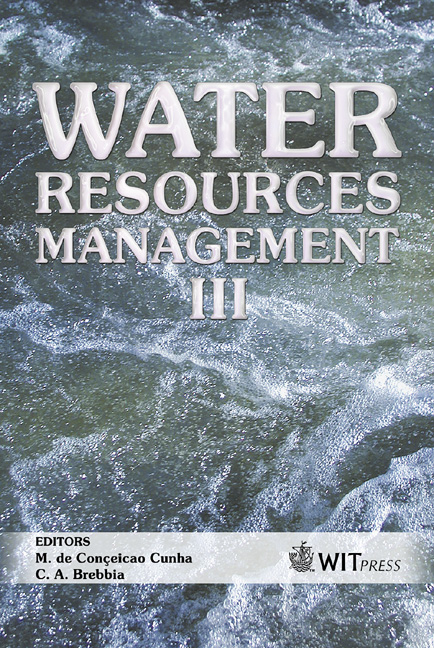The Variation And Utilization Of Water Resources In The Heihe River Basin
Price
Free (open access)
Transaction
Volume
80
Pages
9
Published
2005
Size
458 kb
Paper DOI
10.2495/WRM050341
Copyright
WIT Press
Author(s)
J. Wu, Y. Ding, R. Chen, G. Wang & Y. Shen
Abstract
The Heihe River basin, draining an area nearly 130,000 km2, is the second largest inland river basin in China. The upper reach, namely the Qilian mountainous area, is the formation area of runoff and water resources. The method of time series analysis is applied to annual runoff series to analyze the dynamic variation of headstreams. The results show that the variation of the runoff is slightly decreased. The plains in the middle reach are the main consumptive regions of water resources in the basin. The time series analysis method is also applied to the annual runoff series. It shows there is a significant decreasing trend and it indicates an over-consumption of water resources in this area. A historical analysis proves this. Also, the irrational utilization of water resources has caused a series of detrimental environmental effects, which are summarized as water environment change, land desertification and salinization, and vegetation degeneracy. A water consumption model of the mainstream area is established to analyze the characteristics of water consumption in the middle reach. The simulated result shows that water consumption increases by about 1040×104 m3/yr on average. Keywords: runoff variation, water consumption, time series analysis method, Heihe River basin. 1 Introduction The Heihe River Basin, located in the northwest China, is the second largest inland river basin in China (Fig. 1). It covers from N 37°41′—42°42′and E 96°42′ — 102° 00′,with an area of 12.83×104 km2. Heihe River originates from Qilian Mountains in the south, flows through the middle basin called as Hexi
Keywords
runoff variation, water consumption, time series analysis method, Heihe River basin.





